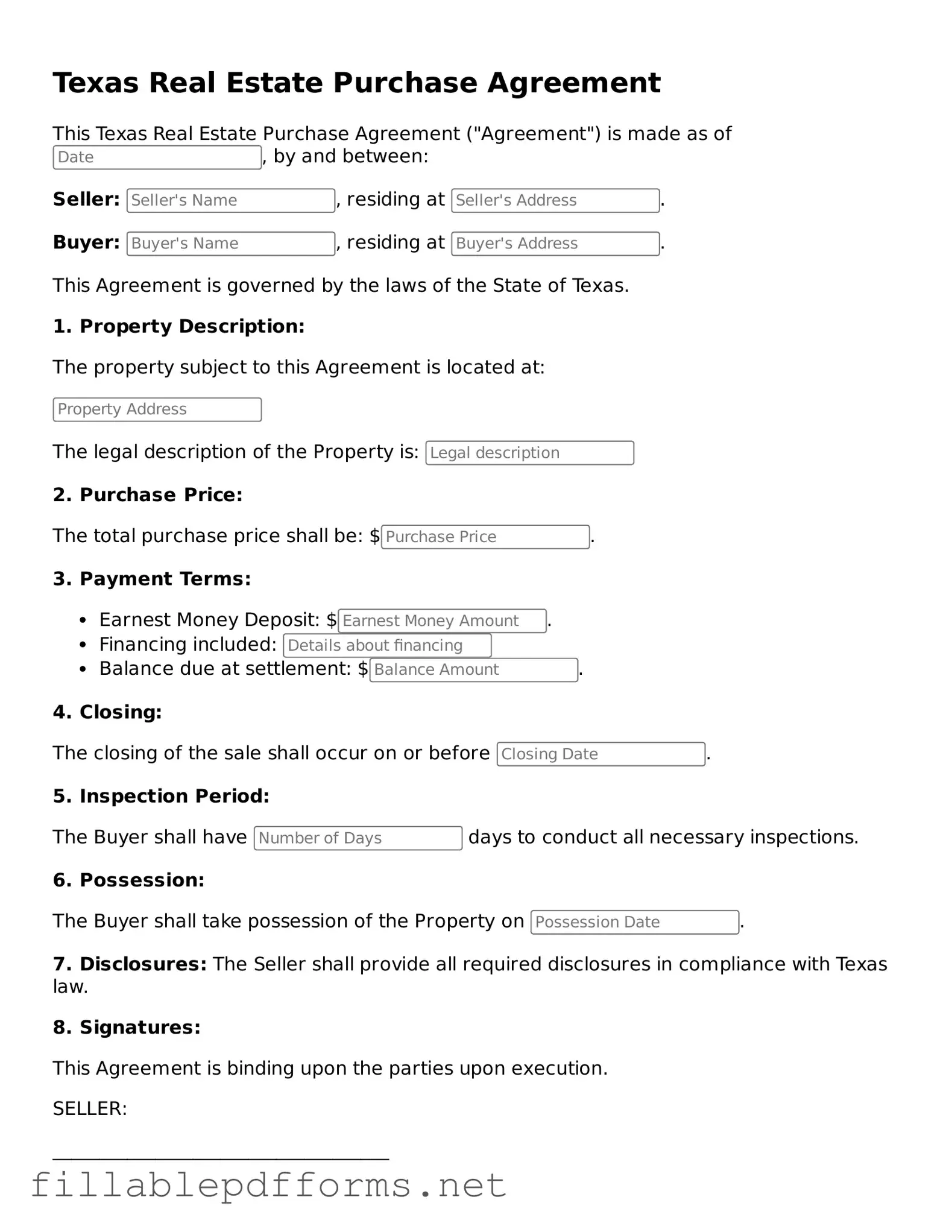Attorney-Verified Real Estate Purchase Agreement Form for Texas State
The Texas Real Estate Purchase Agreement form is a legally binding document that outlines the terms and conditions for the sale of real estate in Texas. This essential form protects the interests of both buyers and sellers, ensuring that all parties understand their rights and obligations. With its detailed provisions, it serves as a crucial tool in the real estate transaction process.
Launch Editor Here
